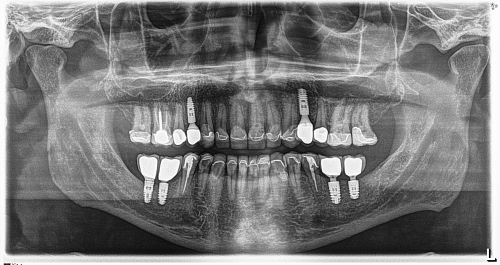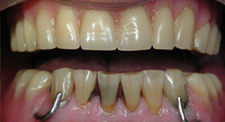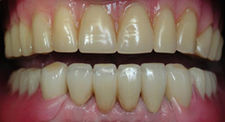Whether you need a tooth replacement or to touch up some minor flaws or injuries to your teeth, Kneib Dentistry has you covered with affordable dental implants for anyone living around our office in Erie, PA.
If you are missing one or more teeth, you'll want a tooth replacement that looks as natural as possible. If dentures don't work for you, consider dental implants. Unlike dentures, which can be removed, this option for tooth replacement is permanently anchored into the jaw itself, in which it acts as the tooth root. Dental implant surgery gives you the closest option available to having your natural teeth back again.
Dental Implant Surgery
 To qualify for dental implant surgery, you'll need to have healthy oral tissue and jawbone ridges that are in good shape. For people with a thinner or smaller jawbone, a CAT scan is typically needed to determine whether an implant is possible. In some cases, bone grafting is needed to add bone mass to the jaw. When the tooth replacement is inserted into the jaw, a chemical and mechanical bond is formed, and the jawbone actually grows into the implant. It generally takes around six months for the tooth replacement to successfully fuse with the bone.
To qualify for dental implant surgery, you'll need to have healthy oral tissue and jawbone ridges that are in good shape. For people with a thinner or smaller jawbone, a CAT scan is typically needed to determine whether an implant is possible. In some cases, bone grafting is needed to add bone mass to the jaw. When the tooth replacement is inserted into the jaw, a chemical and mechanical bond is formed, and the jawbone actually grows into the implant. It generally takes around six months for the tooth replacement to successfully fuse with the bone.
Once the implant area is fully healed, an abutment is placed on top of the implant. The purpose of the abutment is to hold the crown. The implant crown is finally placed and it looks as if you have your tooth back again.
Dr. Robert W. Kneib is one of only a few general dentists in the Erie area that places dental implants.
The image to the right is a panoramic x-ray taken of a patient who had six tooth replacements, all crowned with porcelain. This panoramic image shows the final restoration.

Before Dental Implants

After Dental Implants

Before Dental Implants

After Dental Implants
For More Information
Get familiar with dental implants, the procedure, and how to choose the perfect implant for you, by heading over to the Kneib Dentistry blog and reading our post on types of dental implants!
Dental Implants FAQs
What can be done for a single missing tooth?
In the case of a single missing tooth, a dental implant can be placed in the jawbone area of the missing tooth. The implant will serve as a replacement for a tooth root and an individual crown. The total apparatus is referred to as a single-tooth implant crown.
Once in place, the implant crown will look, feel, and function like a natural tooth. They are cleaned and flossed just like natural teeth, and best of all, they do not require any special tools to clean around them like bridges. Although dental implants will not decay, they require impeccable oral hygiene.
A missing tooth? Dental care implants could be your answer.
What is a dental implant?
Are there different types of dental implants?
Does dental implant technology work?
Who should you see about getting dental implants?
Should you replace missing teeth with dental implants?
How many dental implants should be placed?
What is the dental implant process like?

